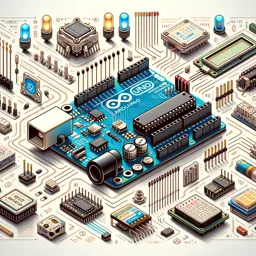Introduction:
Autonomous robots, capable of performing tasks without human intervention, have captured the imagination of DIY enthusiasts and professionals alike. With Arduino, building such robots has become a tangible project for anyone, regardless of their skill level. This step-by-step guide will walk you through creating your first autonomous robot using an Arduino board and basic components.
Step 1: Gathering the Components
To build an autonomous robot, you’ll need:
- Arduino Uno Board
- Ultrasonic Sensor for detecting obstacles
- Two DC Motors for movement
- Motor Driver to control the motors
- Chassis for mounting the components
- Wires and Power Supply
Step 2: Assembling the Robot
- Mount the Motors: Secure the motors to the chassis. These will control the robot’s movement.
- Attach the Ultrasonic Sensor: Place the sensor at the front of the robot. This will allow the robot to “see” obstacles in its path.
- Connect the Arduino Board: Wire the motors and sensor to the Arduino using a motor driver. This will control both the motors and sensor for autonomous movement.
Step 3: Writing the Code
Use the Arduino IDE to program your robot. Start by writing code that enables the ultrasonic sensor to detect objects. When an obstacle is detected, the robot should change direction. You can easily find open-source code for this, which can be modified to suit your project.
Step 4: Testing and Tweaking
Once the robot is assembled and programmed, run tests to ensure the sensor is detecting obstacles accurately and that the motors respond correctly. Make adjustments to the code if needed, such as fine-tuning the distance at which the robot avoids obstacles.
Conclusion:
Building an autonomous robot with Arduino is a rewarding project that introduces you to the fundamentals of robotics and programming. With affordable components and open-source resources, Arduino makes it easier than ever to create autonomous robots that can navigate and interact with their environment.



















